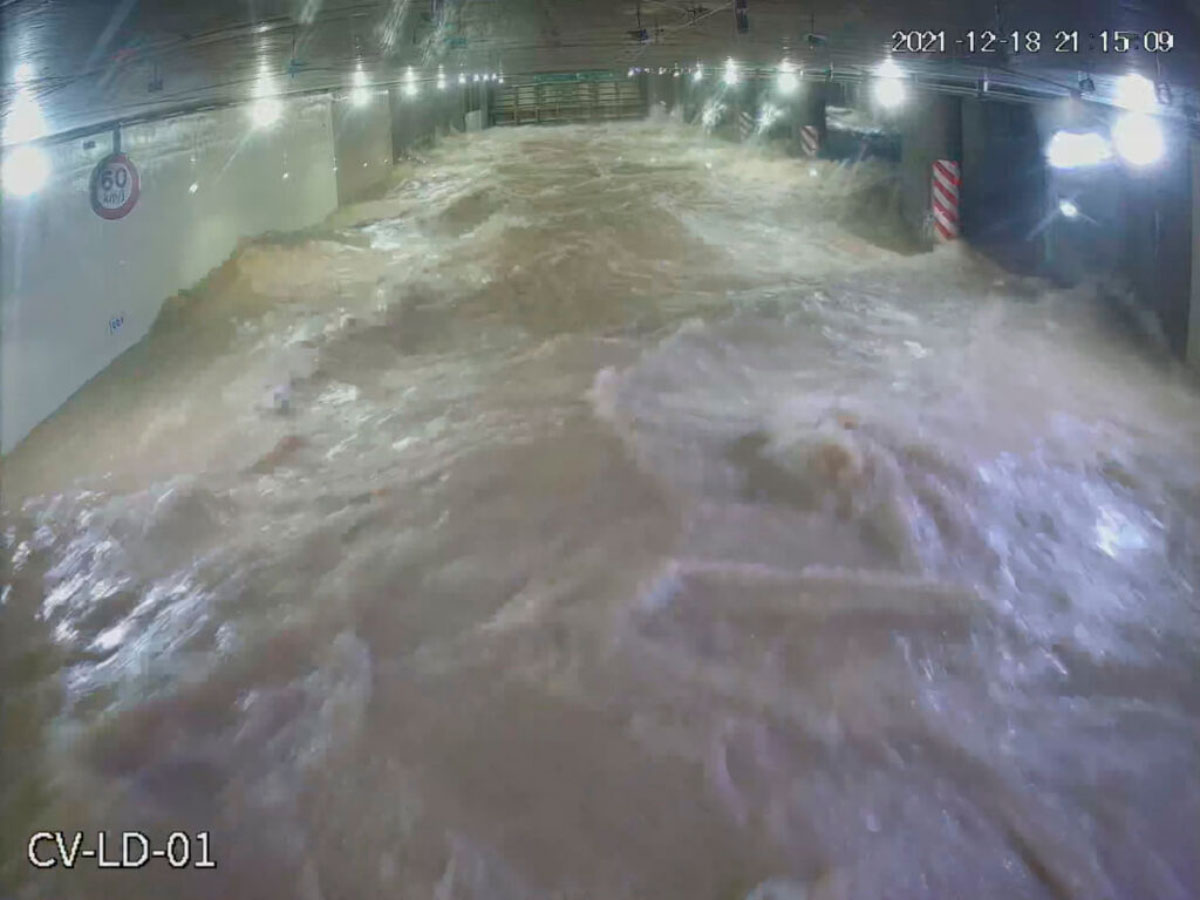Kuala Lumpur is the capital of the Federation of Malaysia. With a metropolitan area population of 8.6 million people, the flow of road traffic is a challenge for the city. In addition, these millions of inhabitants enjoy an equatorial climate, hot and cloudy, with abundant rainfall. In fact, rainfall is another challenge for the city; although it occurs throughout the year, it tends to be heaviest in the months of March and April with between 257 and 290 l/m2 and October and November with between 265 and 321 l/m2. Well, the Malaysian government tackled both challenges with a major engineering and construction project: the SMART (Stormwater Management and Road Tunnel).
At 9.7 km long in its stormwater drainage section, and 4 km long in the highway section, SMART is the longest stormwater drainage tunnel in Southeast Asia, the second longest in Asia and the world’s first dual-function tunnel. Indeed, with a diameter of 13.2 m, the SMART is a three-storey tunnel: two upper levels, intended in normal conditions for vehicles (except motorbikes and heavy vehicles), and a lower level to divert stormwater.

However, the highly versatile SMART tunnel has four modes of operation. In the first mode, with clear skies and no rainfall, the utility is limited to easing traffic conditions in Kuala Lumpur. In the second mode, however, when there is moderate rainfall over the city, the lower deck begins to collect the water that accumulates on the surface; meanwhile, the two upper decks remain open to traffic. In the third mode, on the other hand, in anticipation of an unexpected increase in rainfall intensity, the upper lanes are closed to traffic, although they have not yet flooded and therefore not yet used to carry water. Finally, in the fourth mode of operation, when rainfall starts to become excessive, the entire tunnel, with its three floors, is flooded and used in its entirety to collect and divert water.

The SMART tunnel began construction in November 2003, under the direction of the Malaysian Highway Authority and the Malaysian Department of Irrigation and Drainage, and thanks to a collaborative agreement between two major Malaysian construction companies: Gamuda Berhad and MMC Corporation Berhad. Two Herrenknecht tunnel boring machines from Germany were used, with Gusztáv Klados, a well-known Hungarian tunnel engineer, as project manager. The construction cost was €465 million.

The first phase of the engineering project, consisting of the highway sections of the SMART system, was officially opened on 14th May 2007, while the operations of its storm water conveyance section started in June of the same year. In 2011, this monumental project received UN-Habitat’s “Scroll of Honour“, an award that recognises, among other things, “quality of urban life”.

In December 2021, SMART went into fourth operation mode for the eighth time since its inauguration. At that time, during the heavy rains and subsequent massive flooding that occurred between 16th and 18th December, the system diverted 5 million m3 of water during the 22 hours it was activated. The situation in Kuala Lumpur would undoubtedly have been much worse without the SMART tunnel.
An explanation of the project, with a wealth of images, can be found here in this VÍDEO.
Sources: Wikipedia, SMART Tunnel, Macrotrends.
Images: Wikipedia, Gamuda Berhad.







